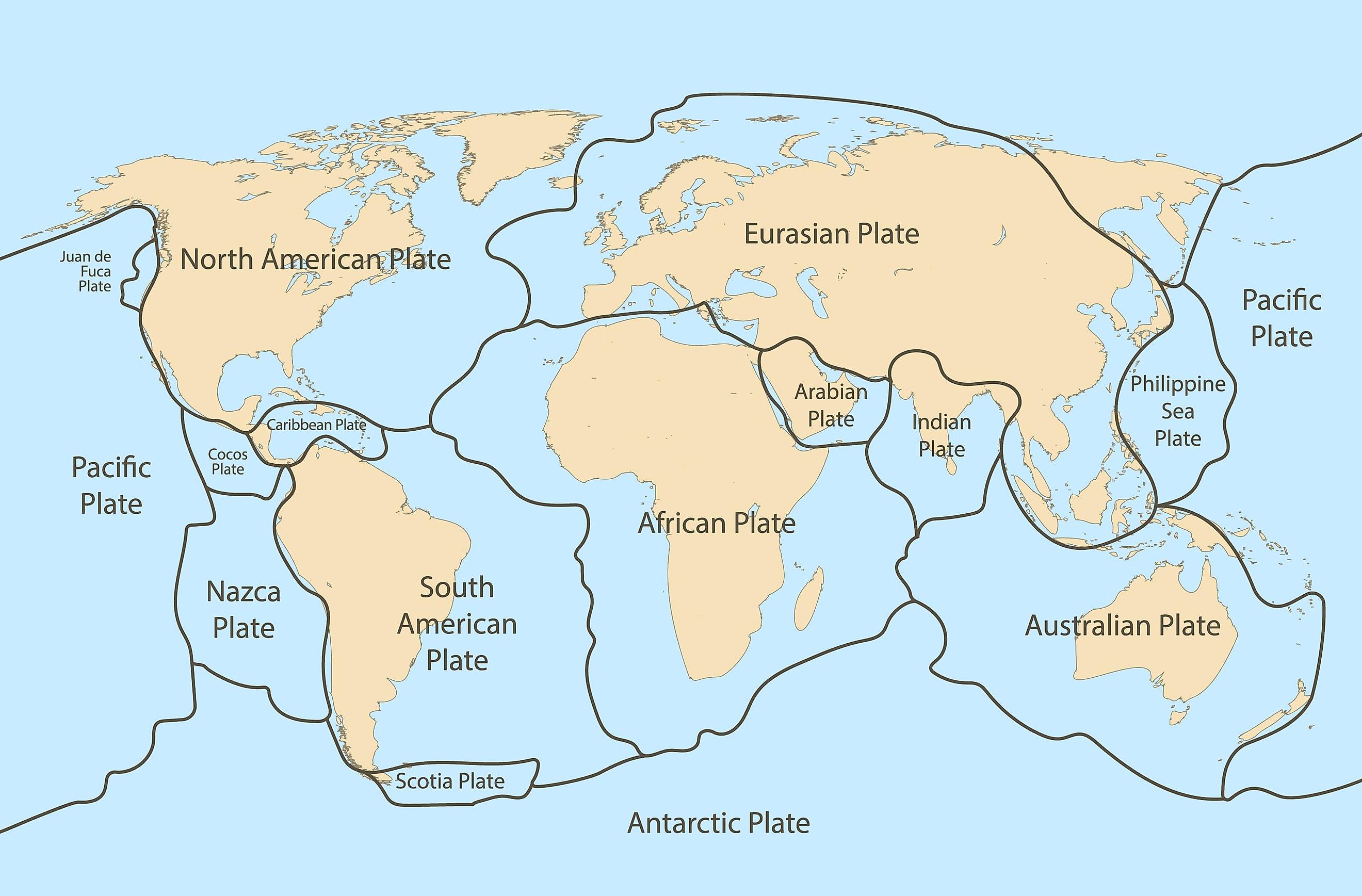
7 Major Tectonic Plates
Earth is a dense, rocky planet that originated approximately 4.6 billion years ago from molten substances. At its center, Earth has an extremely hot and dense core. Encircling the core is the mantle, and above the mantle at the surface lies the Earth's crust. There are two types of crust: the denser, basaltic oceanic crust found beneath oceans, and the continental crust which is lighter and primarily composed of granite. Additionally, scientists have identified another crucial layer called the lithosphere. This solid layer is made up of the rocky crust and a thin solid segment of the mantle just below it.
Scientists believe that the solid lithosphere, which envelops the Earth's entire surface, is actually divided into large slabs known as tectonic plates. These include seven major plates, eight minor plates, and several very small microplates that constitute the Earth's lithosphere.
The seven major tectonic plates listed from largest to smallest are the Pacific, North American, Eurasian, African, Antarctic, Indo-Australian, and South American Plate.
The Theory Of Plate Tectonics
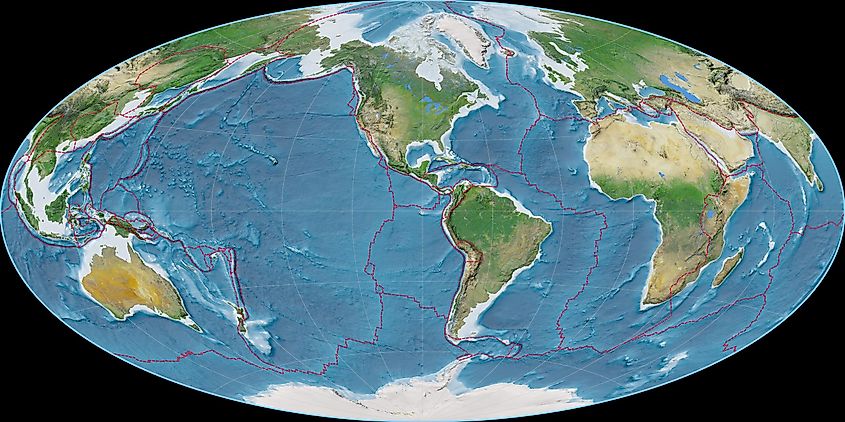
Based upon the theory of continental drift, presented by Alfred Wegener on January 6, 1912, and incorporating geological and geophysical data, the theory of plate tectonics states that the Earth's outer shell is made up of separate plates which glide over the Earth's rocky inner layer, and interact with each other at their boundaries, that is the outermost border of a tectonic plate. This theory has been widely accepted in the scientific community since the middle of the 20th century. This theory explains how mountains are formed, why volcanoes exist, and why certain places have earthquakes and others do not.
What Is A Tectonic Plate?
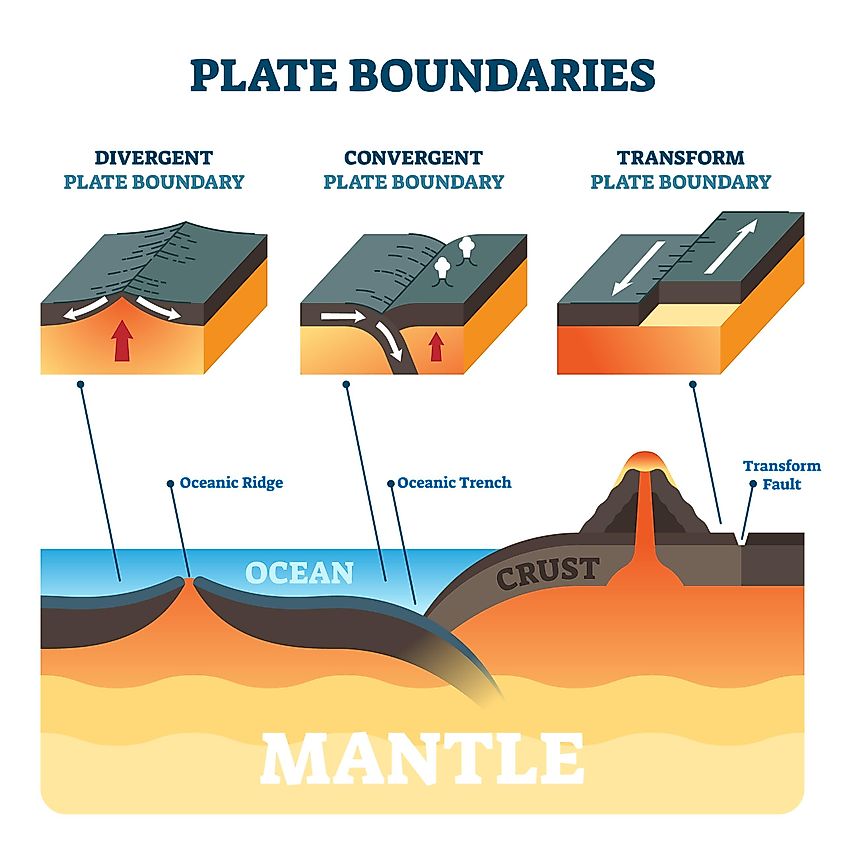
There are three categories of tectonic plates based on their comparative sizes. There are major plates, minor plates, and microplates. Tectonic plates, also known as lithospheric plates, are massive, non-uniform pieces of solid rock whose layers include oceanic and/or continental crust and upper mantle, which are the two outermost layers of the Earth and together make up the lithosphere. Tectonic plates sit atop the asthenosphere, a partially molten rocky layer that allows tectonic plates to drift.
Most plates are made up of either oceanic or continental crust. However, some of the larger plates are comprised of both. For continental and oceanic crust to co-exist on one plate and for plate interactions between a continental plate and an oceanic plate to not result in the destruction of one of the plates, these two types of crust have been determined to have an equivalent weight to each other, this based upon their physical properties. Oceanic plates are thinner and more dense, while continental plates are thicker and less dense. This differential maintains a relative weight equivalency; both types of crust weigh the same when comparing pieces with the same surface area. This allows for plates comprised of continental and oceanic lithosphere to be balanced and for plates with both types of crust to interact with the asthenosphere in the same way.
While it is an outlier occurrence, sometimes smaller plates come into contact with larger plates, and their slight weight differential causes a 'sinking' of these smaller plates below the larger and heavier ones. There are three types of plate-to-plate boundary interactions defined by how a plate moves. These are divergent, convergent, and transform fault boundaries. It is when the boundaries of one plate interact with the boundaries of another plate that geologic phenomena such as earthquakes, the formation of mountains, and volcanic eruptions occur.
What Are The Seven Major Tectonic Plates?
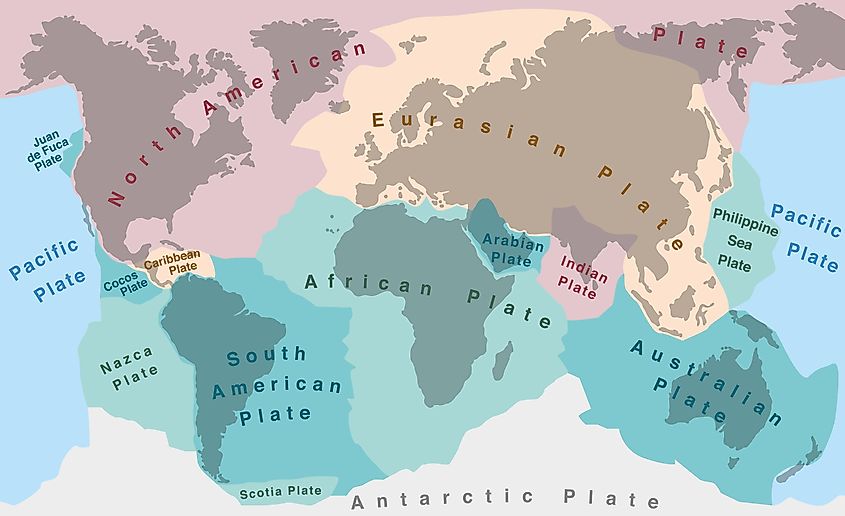
While there are collectively fifteen tectonic plates when the entire Earth is considered, for the most part, it is seven tectonic plates that cover the majority of the Earth. These plates are the African plate, the Antarctic plate, the Eurasian plate, the Indo-Australian plate, the North American plate, the Pacific plate, and the South American plate, each named for the region of the Earth's crust that they encompass.
The Pacific Plate
The Pacific Plate covers 40,000,000 square miles, making it the largest tectonic plate. This plate is comprised of the western portion of North America and Alaska and stretches across the Pacific Ocean to encompass the east coast of Japan and Indonesia. The Pacific Plate moves at a rate of 5.0 to 10.0 centimeters per year. The Pacific plate's boundaries primarily comprise the Pacific Ring of Fire, also known as the Circum-Pacific Belt and the Girdle of Fire. The Ring of Fire is the circular region defined by the boundaries of the Pacific plate, which has most of the active volcanos across the Earth as well as most of the earthquakes. The majority of the Ring of Fire is under the Pacific Ocean and is comprised of over 450 volcanoes.
The North American Plate
The North American Plate, made up of both continental and oceanic crust, spans 29,000,000 square miles of the Earth. This makes it the second largest tectonic plate, only smaller than the Pacific plate. The North American plate extends over part of North America, the North Pole, northern Japan, Greenland, Cuba, and the Bahamas and moves at a rate of 2.3 centimeters per year.
The Eurasian Plate
The Eurasian Plate is comprised of most of Europe, Russia, and China, as well as part of the Atlantic and Arctic Oceans. It is the third largest tectonic plate, spanning 26,200,000 square miles across the Earth. The Eurasian Plate has convergent, divergent, and transform fault boundaries and moves at a varying rate, anywhere from 0.7 centimeters per year to 1.4 centimeters per year.
The African Plate
Also known as the Nubian Plate, the African plate is the fourth largest tectonic plate, covering 23,700,000 square miles of the Earth. The African plate is made up of both continental and oceanic lithosphere and encompasses the majority of the continent of Africa and about a third of the Atlantic Ocean. Its boundaries are both divergent and convergent, with the entire plate moving at an average rate of 2.5 centimeters per year.
The Antarctic Plate
The Antarctic Plate is the fifth largest tectonic plate. It is comprised of the entire continent of Antarctica as well as the surrounding oceans and so is made up of both continental and oceanic lithosphere. This plate covers 23,500,000 square miles of the Earth's surface. The boundaries of this plate are 95% divergent and 5% convergent, with the entire plate moving at an average rate of 1.0 centimeters per year.
The Indo-Australian Plate
The Indo-Australian Plate is comprised of parts of Australia and India as well as most of the Indian Ocean. It is the sixth largest tectonic plate, spanning 22,700,000 square miles across the Earth. The Indo-Australian Plate is comprised of two plates: the Australian Plate and the Indian Plate. More often than not, these two plates are considered one, as historically, it was assumed that they were, in fact, one single plate. This plate moves at a rate of 3.0 centimeters per year.
The South American Plate
The South American plate is comprised of South America as well as a large portion of the Atlantic Ocean. It is the seventh-largest tectonic plate and spans 16,800,000 square miles. At this size, the South American plate is the smallest of the seven major plates. This plate has convergent tectonic boundaries and, in recent years, has caused some catastrophic earthquakes. The South American plate moves from 2.7 to 3.4 centimeters per year.
How do Tectonic Plates Impact Our Lives?
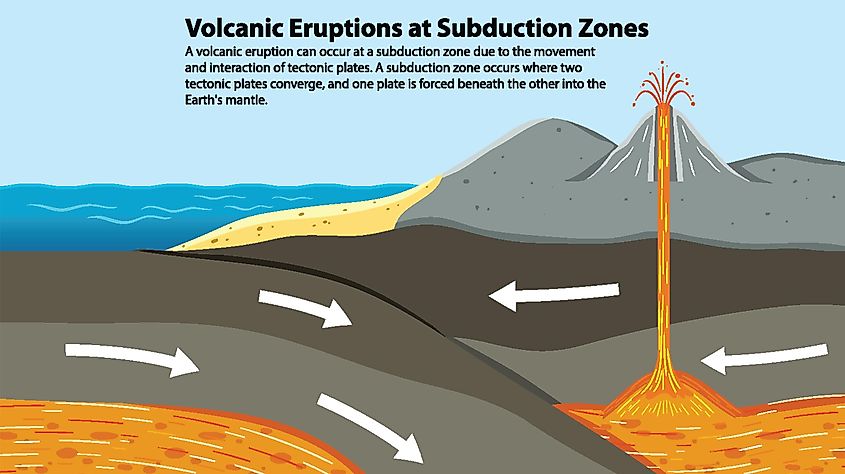
While the movements of tectonic plates are, for the most part, undetectable without advanced scientific technology, there are some instances during which the movement of tectonic plates felt but that it is also destructive. Earthquakes, for example, are the result of the movement of different plates against each other along their boundaries. Where two plates meet is called a fault plane or fault line, and along these fault lines, the chance of tectonic earthquakes, also known as interplate earthquakes, is drastically elevated compared to locations in the middle of a plate.
There are three types of fault lines: normal, reverse, and strike-slip. This refers to what position two plates lock into each other. After two plates are locked, the continued movement of the plates towards, away, or against each other results in stored strain energy. When that energy is released, you get an earthquake.
The movement of tectonic plates also causes volcanic eruptions. A volcanic eruption is defined as when lava (molten rock), volcanic ash, and/or gases vent through an opening in the Earth's crust. At its simplest definition, a volcano is a vent for the high-pressure environment of underground magma chambers.
Above the ground, volcanoes are created as one tectonic plate is forced under another. Most often, this occurs when a thin and dense oceanic plate moves under a thicker and less dense continental plate. As this process occurs, magma chambers are created. The volume of magma in these chambers slowly increases, and when enough pressure builds up, the most likely result is a volcanic eruption. Underneath the Earth's oceans, this process happens differently. Underwater volcanoes are found along cracks that are created by tectonic plates moving away from each other. When this happens, it releases magma, which fills the space created by the separating plates. Both of these processes are observed along the Ring of Fire at a much higher rate than any place else on the Earth.
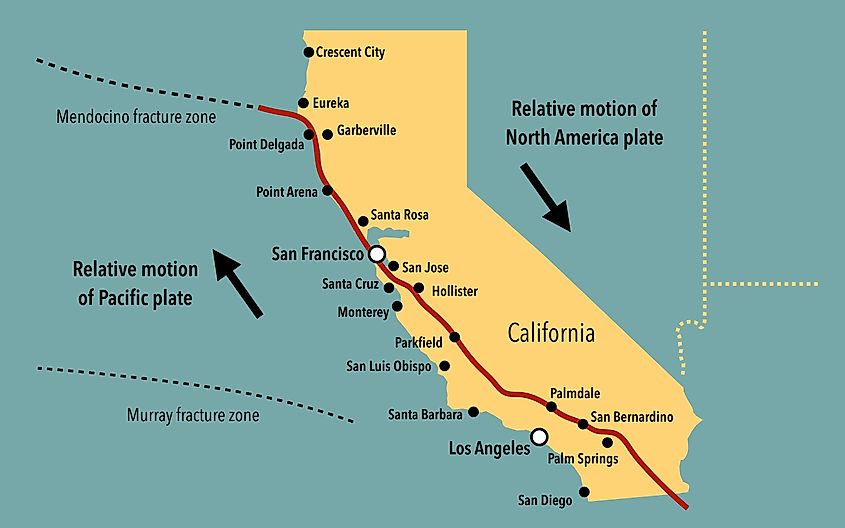
It is important to know where fault lines run as well as how tectonic plates interact with each other so that when infrastructure is planned and built, the architects and engineers take into consideration the need to create earthquake-resistant buildings. Buildings that are built in places such as San Fransisco and Los Angeles, which are along the Ring of Fire, are built on top of flexible pads, which are composed of rubber, steel, and lead, so that they do not collapse at the slightest tremor.
In terms of volcanos, knowing how tectonic movements have caused eruptions in the past can allow for early warning systems to warn those in dangerous proximity to these volcanoes to evacuate. While there have been many historical tragedies caused by tectonic plate movement, by understanding tectonic plates, we can endeavor to minimize the impact of potential future quakes and eruptions and hopefully save lives.











